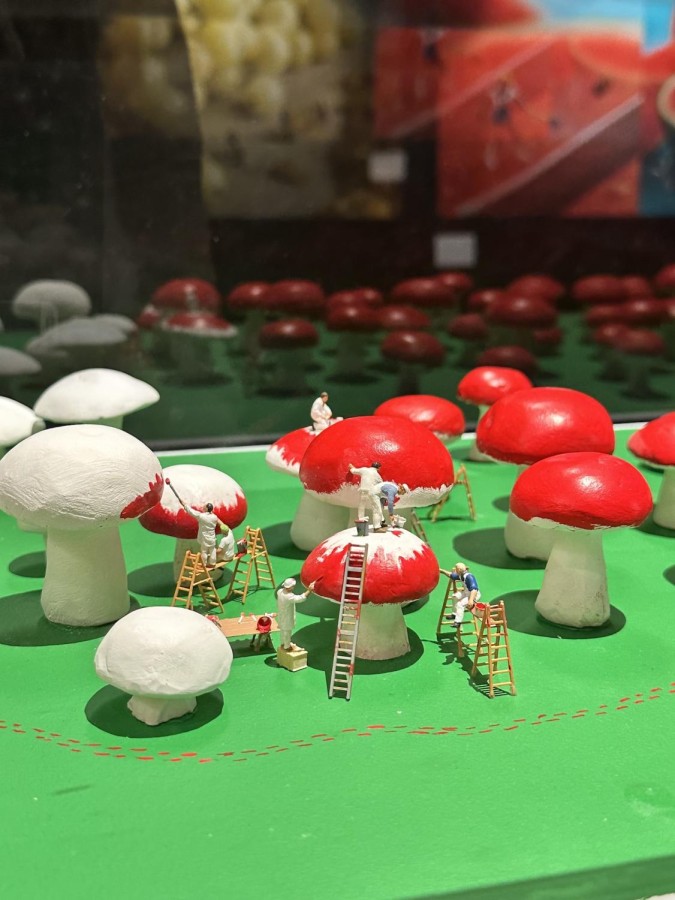The much-publicized miniature art exhibit has identified its way to New York City. It is at the moment on watch in NoHo.
Afnan Abbassi
The Exhibition is located at 718 Broadway. Ticket price ranges for older people start at $24. (Afnan Abbassi for WSN)
“Small is Beautiful, Miniature Art” in the beginning started as a Europe-exceptional show only on perspective in London and Paris. But now, with Instagram and Pinterest attracting a mainstream desire in miniature art, the world’s most significant miniature art show has expanded throughout the Atlantic to Manhattan. This little-scale artwork calls for precise method and an extraordinary awareness to element.
As pointed out in its exhibition book, “Small is Beautiful” is arranged into 6 sections: “Tiny is Humorous,” “Mini Artwork for Maxi Feelings,” “It’s a Tiny (Magic) World,” “The Artwork of Paper,” “Life in Diorama” and “To the Infinite and Beyond.” Each individual part is made up of exclusive strategies to reimagining a smaller-than-life truth by way of the will work of 32 intercontinental artists. By categorizing the show into exploratory subsections, the curators generate an interactive and otherworldly set up that isn’t constantly attainable with typical-sized artwork. It’s a way to discover the liberty of creativeness by way of unconventional objects, principles and mediums.
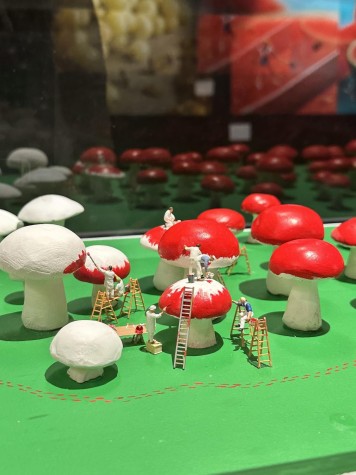
“Tiny is Funny” is made up of summary operates that include a comedic component to the artwork’s message. Take “Wet Paint” by Pierre Javelle and Akiko Ida, the pair of artists improved identified as Minimiam, for case in point: in their piece, miniature figures are revealed climbing up and portray mushrooms to help you save them from currently being eaten by serious-earth humans. Each character is pitching in to the collective exertion of coating the mushroom heads in crimson paint. Some are painted all the way via, even though others are nevertheless in the procedure.
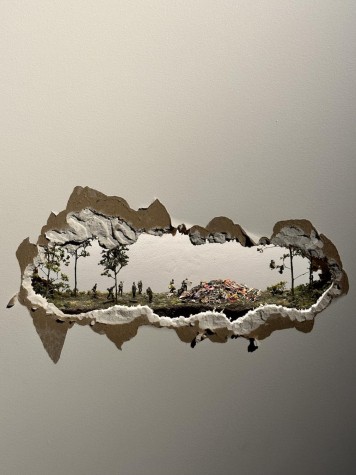


In “Mini Art for Maxi Ideas,” artists technique eventualities that are way too elegant or conceptual to evaluate. Thomas Doyle’s “You Remember It, or It Remembers You,” part of his “Pass-by Series,” is a assortment of miniature art eventualities that are crafted within a ripped-out component of a wall. In accordance to Doyle, this preference was meant to replicate on the much more pressing ordeals of daily life that “may come from the encounter of war, either as a combatant or a civilian.” In “You Remember It, or It Remembers You,” miniature soldier figurines are positioned to seem exhausted from piling trash, with some resting on a tree trunk or rock, and many others continuing to include to the rising pile of rubbish.
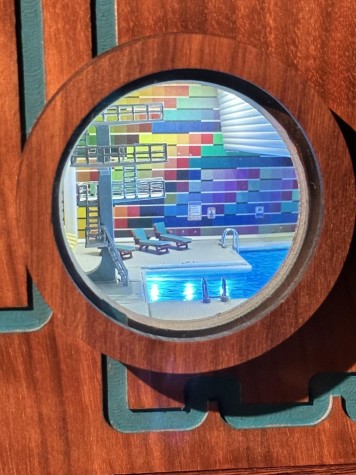


“It’s a Modest (Magic) World” is a assortment of abstract designs that confine lifestyle lessons into one alternate actuality. None of these is effective contain human collectible figurines. The curatorial text in Margie Criner’s “Swim” clarifies how the reason of the function is to demonstrate that “to experience with the pure way of issues can really feel substantially like swimming.” On the lookout into the singular round window of the modest box, there is a prosthetic swimming pool, a shade-palette for a wall, and seaside chairs, all clean and seemingly unused. The serenity of the indoor pool and the absence of human figures insert to the idea that this intended normal path of daily life should not be taken with drive. There is a silent elegance to permitting everyday living be and noticing the specifics of one’s surroundings. This is what “Swim” is encapsulating through the indents inside of the palette wall, the sculpted ripples of pool h2o and the embedded pool lights.
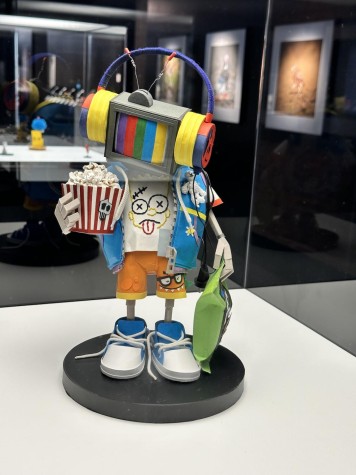


Meanwhile, “The Artwork of Paper” is a determination to the art of origami. It carries the miracles of manipulating a plain rectangular piece of paper into something new, with curves, shade and dimension. Negar Faal’s origami figurine, “Mr. Migor,” is trippy, vibrant and hip. Origami puts an emphasis on edges and angles through the fold of the paper. “Mr. Migor” does this, but also integrates abstraction, vivid colour and modern-day-working day accessories through the folded paper. Whilst the character has a television for a head, all the objects it is carrying have eyes and sharp enamel. None of the elements search like the fragile paper substance that was utilised in their development, nonetheless. In its place, the piece offers the illusion of a plastic robotic toy.
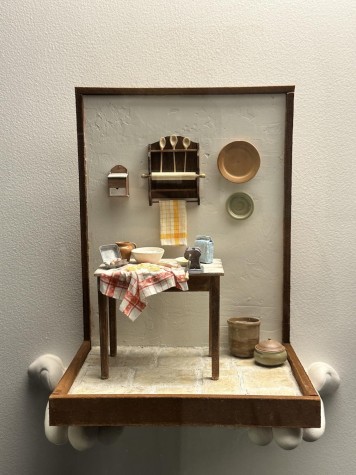


“Life in Diorama” may perhaps be a a lot more classic tactic to miniature art, but it is also the most meticulous to execute. Materials are crafted to accompany the generation of usable content, but in Le Mini Di Claudia’s “Handmade pasta,” almost everything developed is unusable. The dexterity needed to frame the tablecloth to seem all-natural and true and to produce eggs the measurement of a fingernail, all within just a minuscule unclosed area, nevertheless, is unimaginable.
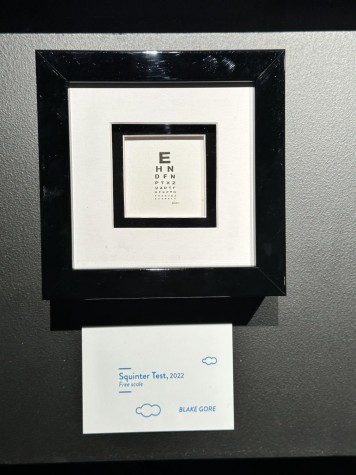


“To The Infinite and Beyond” offers, by much, the smallest miniatures on display in the total exhibition. The is effective are so small that magnifying eyeglasses are obtainable nearby for viewers to borrow. The artists make superior use of this serious minuteness, making use of it as a resource to experiment with irony and humor. Blake Gore’s “Squinter Test” — a depiction of an optotype, or eye exam chart — is far too compact to decipher even if the viewer’s eyes are as in close proximity to as a pair of centimeters absent from the display. Everyone, irrespective of their visual ability, is not able to move the eye take a look at.
Recognizing the element within art — enable by itself miniature artwork — is a reminder for folks to gradual down and notice the elaborateness of each day lifetime. The six sections of “Small is Beautiful” show how creativity can be partaking at the smallest scale. Just about every artist engineers every day actions, objects and concepts into a minuscule alternate reality with persons portray mushroom trees and robot-like origami figurines listening to audio. The miniature artwork in “Small is Beautiful” lets viewers to observe the tiniest particulars, not only in the art, but also what the art is representing — actual lifetime.
Get hold of Afnan Abbassi at [email protected]
